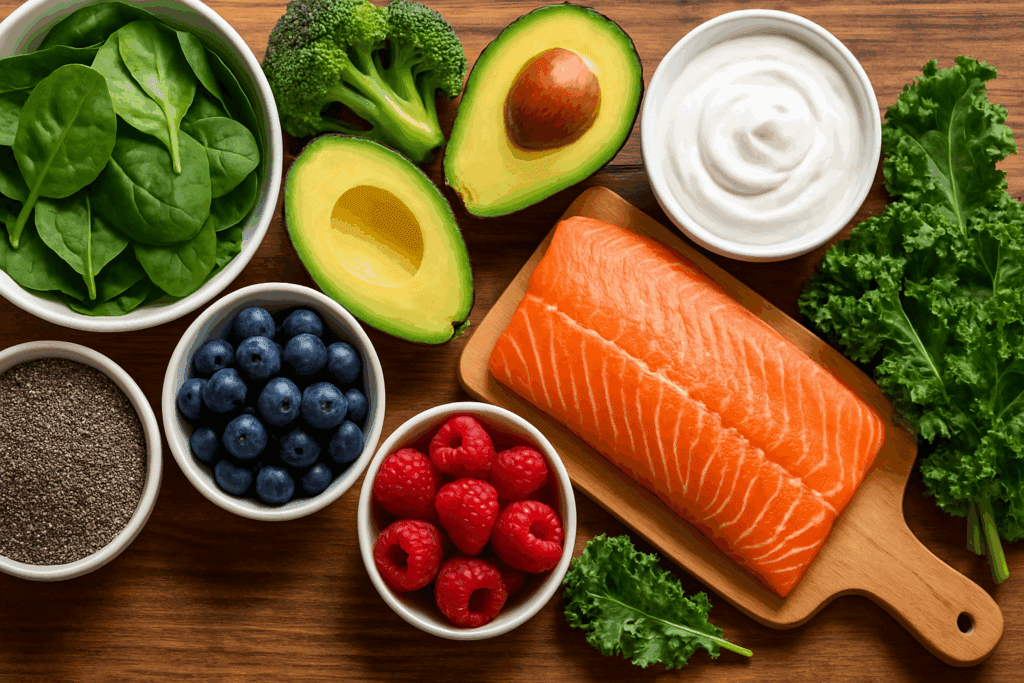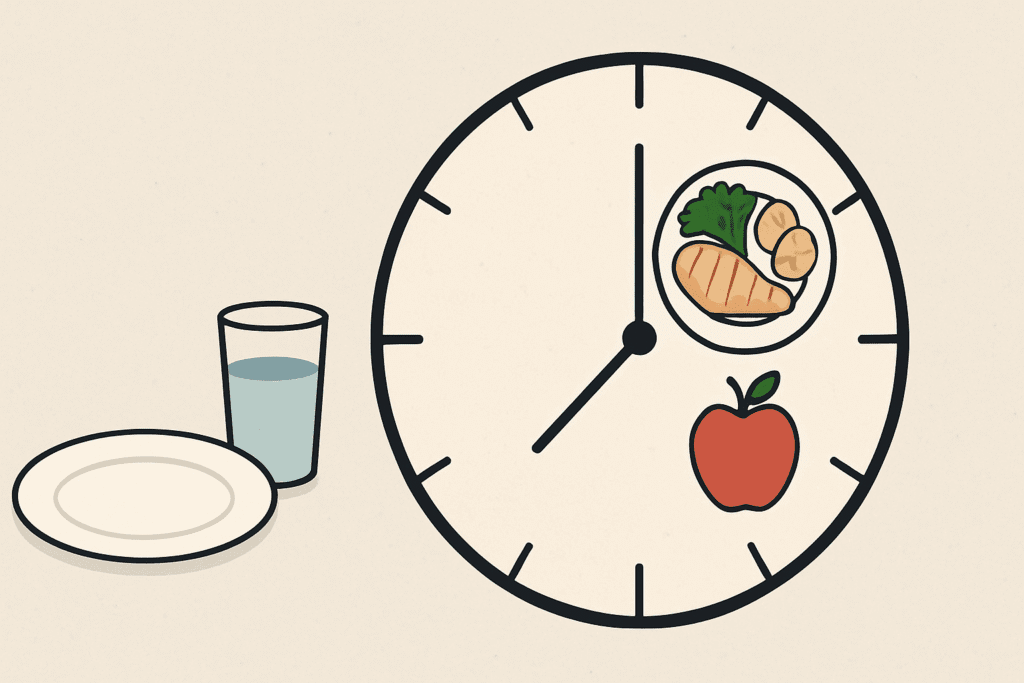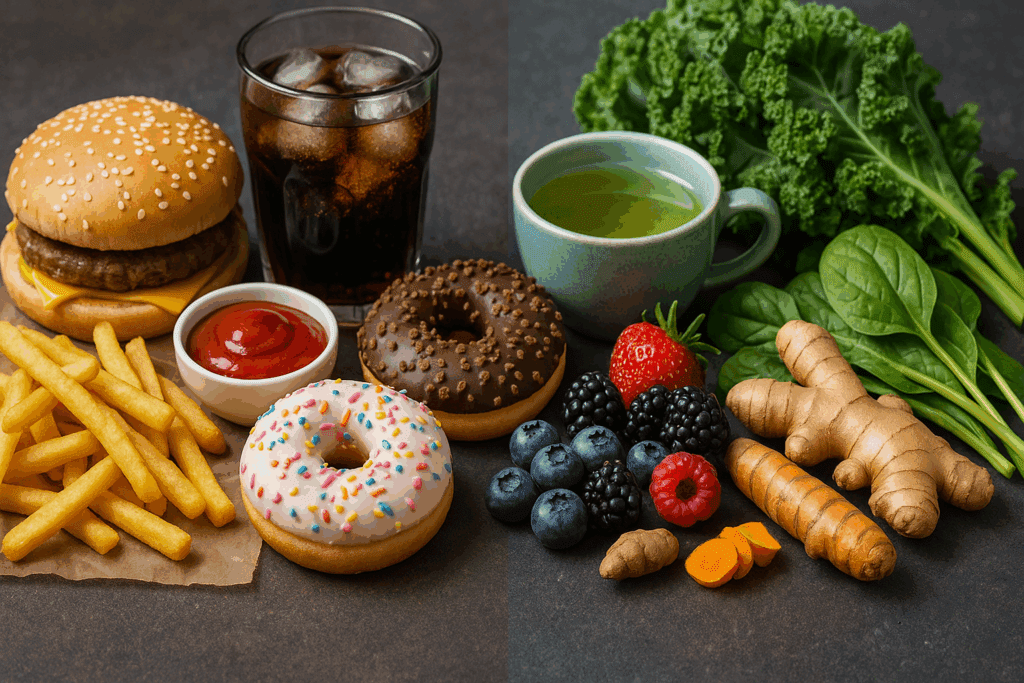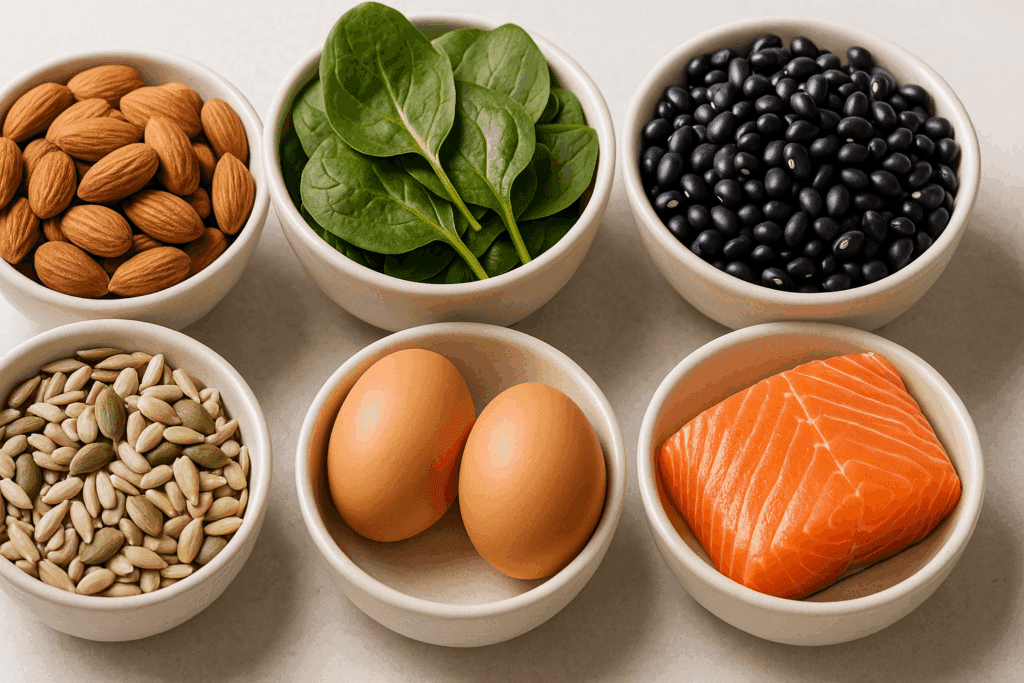In today’s health-conscious world, the desire to achieve a slimmer waist is not merely about aesthetics. For many, learning how to lose inches off the waist fast is also a way to improve metabolic health, reduce the risk of chronic disease, and feel more comfortable in their bodies. With rising awareness about visceral fat and its implications on heart health and insulin resistance, the conversation has shifted from weight loss alone to targeted fat reduction strategies that align with both beauty and wellness goals. This article explores doctor-backed nutritional strategies that can help reduce belly fat in 1 week, safely and effectively, without gimmicks or harmful trends.
You may also like: Expert-Backed Weight Loss Tips for a Healthier Lifestyle: What You Need to Know for Long-Term Weight Control and Wellness

Understanding Belly Fat and Waist Circumference
Before diving into practical techniques on how to lose inches off the waist, it is essential to understand what that really means. The waistline, measured at the narrowest part of the torso or just above the navel, is a key marker for health. Excess fat around the waist, particularly visceral fat, surrounds vital organs and is more metabolically active than subcutaneous fat stored elsewhere. Unlike the softer fat found beneath the skin, visceral fat produces inflammatory compounds and is associated with an increased risk of cardiovascular disease, type 2 diabetes, and even certain cancers.
From a clinical perspective, waist circumference is a stronger predictor of metabolic disease than BMI. For women, a waist size over 35 inches and for men, over 40 inches, raises a red flag. This makes the pursuit of how to slim your waist more than just a vanity project. It is a pursuit grounded in science and long-term health. When individuals focus on strategies that reduce belly fat in 1 week, the goal is often to kickstart a healthier lifestyle, rather than expecting dramatic and permanent results overnight. However, meaningful progress is absolutely possible within a week when the right dietary and behavioral changes are made.
The Science of Losing Inches Off Your Waist
When discussing how to shrink the waist, it’s important to acknowledge the role of calorie deficit, hormonal balance, inflammation, and water retention. While fat loss generally takes time, certain nutritional strategies can create visible changes quickly by reducing bloating, improving digestion, and promoting the use of fat for energy. Reducing processed carbohydrates, increasing protein intake, and managing stress are all backed by research as effective approaches for shrinking the waistline.
Cortisol, the body’s primary stress hormone, has been linked with central fat accumulation. High stress levels, especially when paired with poor sleep and refined sugar intake, tend to promote fat storage around the abdomen. Therefore, any discussion about how to lose inches off the waist fast must also include strategies to manage cortisol through both nutrition and lifestyle.
Additionally, insulin sensitivity plays a major role. A diet high in added sugars and refined starches can spike insulin, a hormone that favors fat storage. Conversely, diets focused on whole foods, fiber, and lean protein help regulate blood sugar and encourage the body to mobilize fat from stubborn areas, such as the waist.

Doctor-Backed Nutrition Strategies That Target the Waistline
One of the most effective ways to reduce belly fat in 1 week is to adopt an anti-inflammatory, low-glycemic diet. This includes cutting back on ultra-processed foods, refined grains, sugary beverages, and alcohol—all of which contribute to waistline expansion through inflammation and water retention. Instead, focus on nutrient-dense options that support digestion, regulate hormones, and promote fat metabolism.
Start with increasing dietary fiber from leafy greens, flaxseeds, chia seeds, avocados, and berries. Fiber not only aids digestion and reduces bloating, but it also stabilizes blood sugar and improves satiety. These changes create a natural caloric deficit without the need for strict dieting. Protein is another critical component, as it supports muscle mass, boosts metabolism, and helps to curb cravings. Eggs, salmon, lentils, and Greek yogurt are excellent high-protein options that fit well into a meal plan focused on how to slim your waist.
Hydration also plays a surprising role. Bloating is often mistaken for fat gain, and dehydration exacerbates water retention. Drinking plenty of water, and incorporating hydrating foods like cucumber and watermelon, can visibly reduce abdominal distension. For those seeking results in just seven days, cutting sodium intake and increasing potassium-rich foods such as sweet potatoes, spinach, and bananas can further minimize water retention.

Meal Timing and Intermittent Fasting
Another powerful nutritional tool to help shrink the waist is intermittent fasting, which aligns with the body’s natural circadian rhythm and enhances fat burning during fasting periods. While not a miracle cure, time-restricted eating has been shown to improve insulin sensitivity, reduce inflammation, and support weight loss when paired with a healthy diet. A common and sustainable method is the 16:8 approach, where one fasts for 16 hours and eats during an 8-hour window. This method can help those looking into how to lose inches off waist fast by controlling hunger hormones and reducing late-night snacking.
Meal timing also matters beyond fasting windows. Eating the majority of calories earlier in the day rather than late at night improves digestion, supports energy levels, and minimizes nighttime insulin spikes. For optimal waist reduction, individuals should aim for balanced meals that contain protein, healthy fat, and complex carbohydrates—ideally consumed before 7 p.m.

Reducing Inflammation Through Food Choices
One of the lesser-discussed but critically important elements of how to shrink waist size quickly is lowering systemic inflammation. Inflammatory foods, such as processed meats, hydrogenated oils, and refined sugars, trigger an immune response that can promote fat storage and water retention. Replacing these with anti-inflammatory options, such as turmeric, ginger, omega-3 fatty acids, and green tea, can lead to rapid improvements in how one looks and feels.
Many people overlook the importance of gut health in this equation. The balance of bacteria in the gastrointestinal tract affects how food is metabolized, how nutrients are absorbed, and how efficiently the body burns or stores fat. Probiotic-rich foods like kimchi, sauerkraut, kefir, and yogurt can support a healthier gut microbiome, which in turn promotes a flatter waist. For those looking for how to reduce belly fat in 1 week, this focus on inflammation and gut health may be the missing link.

The Role of Micronutrients in Waistline Fat Loss
While macronutrients such as protein, fat, and carbohydrates receive most of the attention, micronutrients also play a vital role in the body’s ability to burn fat and reduce bloating. Magnesium, zinc, and B-vitamins support metabolic function, regulate blood sugar, and aid in energy production. A deficiency in any of these can impair progress, even with a clean diet. Magnesium-rich foods like almonds, spinach, and black beans, for instance, help relax the muscles of the digestive tract and reduce constipation—a common contributor to abdominal distension.
Additionally, vitamin D has been linked to fat metabolism and waist circumference. Many individuals are deficient without realizing it, especially those who live in northern climates or spend most of their time indoors. Supplementing with vitamin D under medical supervision or increasing safe sun exposure can enhance the benefits of a nutrition strategy aimed at how to lose inches off waist fast.
Avoiding Common Pitfalls That Prevent Waistline Reduction
One reason people struggle with how to slim the waist is that they unknowingly sabotage their progress with common dietary mistakes. One such pitfall is the overconsumption of healthy but calorie-dense foods, such as nut butters, granola, or smoothies loaded with high-sugar fruits. While these items can be part of a healthy diet, portion control is key when trying to create a caloric deficit.
Another issue is the reliance on packaged diet foods that are low in calories but high in sodium, preservatives, or artificial sweeteners. These ingredients can cause bloating and digestive distress, negating progress even when calorie goals are met. In contrast, whole foods not only support metabolic processes but also enhance the body’s ability to eliminate excess waste and toxins through natural detoxification systems.

Sleep, Stress, and Their Influence on Waist Size
A comprehensive plan for how to lose inches off waist fast cannot ignore the role of sleep and stress. Lack of sleep elevates cortisol levels and disrupts appetite-regulating hormones like ghrelin and leptin. This leads to increased cravings, emotional eating, and reduced motivation for physical activity—all of which contribute to waistline expansion.
Moreover, chronic stress promotes the accumulation of belly fat even in individuals who do not consume excess calories. This is why stress reduction techniques such as deep breathing, meditation, and yoga can be powerful tools in one’s arsenal. They not only calm the mind but also recalibrate the nervous system to favor fat loss rather than fat storage. A well-rested and stress-resilient body responds more favorably to nutritional interventions aimed at how to shrink the waist.
Sustainable Lifestyle Changes That Support Long-Term Results
While this article focuses on how to reduce belly fat in 1 week, it’s important to recognize that short-term results are best maintained through long-term habits. Quick fixes can provide motivation, but without lasting changes to nutrition, stress management, and physical activity, inches lost may quickly return. Therefore, individuals should view these doctor-backed strategies not as temporary measures but as foundational tools for sustainable health.
This means establishing consistent meal patterns, staying hydrated, prioritizing sleep, and eating a wide variety of whole foods that nourish the body and support a healthy weight. Combining these habits with moderate physical activity such as walking, resistance training, or Pilates can enhance fat-burning while toning abdominal muscles for a more defined waistline.
In many cases, the most successful approach to how to slim your waist is one that does not feel like a punishment. When food choices are framed positively, and lifestyle shifts are grounded in self-care rather than restriction, the process becomes not only more effective but also more enjoyable. True waist reduction occurs not only from cutting inches but from gaining confidence, energy, and health.
Frequently Asked Questions: How to Lose Inches Off Your Waist Fast and Safely
1. Can spot reduction techniques help you lose inches off your waist fast? While spot reduction remains a common belief, scientific evidence does not support its effectiveness. You cannot selectively burn fat from just one area by targeting it with exercise alone. However, full-body metabolic conditioning workouts combined with a diet designed to reduce inflammation and improve insulin sensitivity can make a noticeable difference in waist size. If you’re exploring how to lose inches off waist fast, focus on strategies that support systemic fat loss, which eventually leads to reductions in stubborn abdominal fat. Think of it as creating the right internal environment for your body to naturally prioritize fat stores around the waist.
2. How do gut health and microbiome diversity influence your ability to slim your waist? Emerging research has shown that gut bacteria play a surprisingly large role in fat storage, appetite regulation, and even waist circumference. Individuals with diverse microbiomes tend to have less visceral fat and better metabolic health. Incorporating fermented foods, resistant starches, and prebiotic fibers into your diet can support microbial diversity. When considering how to slim your waist, improving gut health may yield benefits beyond digestion, including better hormonal regulation and reduced cravings. The key lies in feeding your beneficial bacteria consistently with the right types of fiber-rich, plant-based foods.
3. Is it realistic to reduce belly fat in 1 week without extreme dieting? Yes, but it requires focusing on more than just calorie restriction. Short-term reductions in belly bloat, water retention, and digestive sluggishness can create a visible difference within seven days. To learn how to reduce belly fat in 1 week, shift toward low-sodium, anti-inflammatory meals while increasing potassium, hydration, and fiber intake. Avoiding crash diets is crucial—they often lead to rebound weight gain and can disrupt metabolic hormones like leptin and ghrelin. Instead, emphasize nutrient density, strategic meal timing, and gentle detox support through cruciferous vegetables and adequate sleep.
4. How important is protein timing when trying to shrink your waist? Protein intake is essential for fat loss, but timing it correctly enhances its effectiveness. Consuming a high-protein breakfast has been shown to reduce overall calorie intake throughout the day and improve satiety. Spacing protein evenly across meals stabilizes blood sugar and reduces the urge to snack on high-carb foods. For those exploring how to shrink waist size, this strategy ensures muscle preservation while encouraging fat burning. Furthermore, post-exercise protein helps repair lean tissue, which indirectly supports waistline reduction through increased resting metabolic rate.
5. Can psychological stress prevent waist reduction even with proper nutrition? Chronic psychological stress is a major, often overlooked, barrier to fat loss. Elevated cortisol levels can trigger abdominal fat storage even when diet and exercise appear on point. Mindfulness practices such as deep breathing, journaling, and even laughter therapy have been shown to lower cortisol and support hormonal balance. When researching how to lose inches off waist fast, many people neglect the emotional components of weight retention. Prioritizing mental wellness may be the missing link in achieving sustainable waist reduction.
6. Do temperature exposure methods, like cold therapy, help shrink the waistline? Cold exposure, such as cold showers or cryotherapy, has been studied for its role in activating brown fat, a type of fat that burns calories for heat. While the effect is modest, combining cold exposure with fasting or exercise can increase its impact. These strategies may accelerate fat mobilization, especially when practiced consistently. For individuals aiming to learn how to shrink waist size without aggressive dieting, biohacks like thermogenesis can be a complementary tool. Just ensure safety and gradual adaptation if incorporating cold therapy into your routine.
7. How do circadian rhythms affect efforts to lose inches off waist? Circadian biology plays a surprisingly large role in metabolism, fat storage, and insulin sensitivity. Eating in alignment with natural light cycles—for example, consuming your last meal before sunset—improves glucose control and lipid metabolism. Those who eat late at night are more likely to store fat around the midsection, even with equal calorie intake. Understanding how to lose inches off waist requires attention not only to what you eat, but also to when you eat it. Optimizing your daily schedule to match your biological clock could be a game-changer for your waistline.
8. What role do environmental toxins play in waistline expansion and fat retention? Certain environmental toxins, known as obesogens, can interfere with hormone signaling and promote fat accumulation, particularly in the abdominal region. These toxins are often found in plastic containers, nonstick cookware, and pesticide-laden produce. Reducing exposure by using glass food containers, avoiding microwaving in plastic, and choosing organic when possible may help the body shed stubborn waistline fat more easily. When investigating how to slim your waist, it’s worth considering these hidden factors that silently influence metabolic efficiency. Detoxification-supportive nutrients such as sulforaphane, found in broccoli sprouts, can assist in eliminating these compounds.
9. Are there any cultural or gender-specific considerations for reducing belly fat in 1 week? Yes, biological sex and cultural dietary patterns both influence fat distribution and loss. For example, postmenopausal women may experience a shift in estrogen that favors central fat gain, making it more challenging to reduce belly fat quickly. Similarly, traditional high-carbohydrate diets in certain cultures can contribute to insulin resistance if not balanced with fiber and protein. Understanding how to reduce belly fat in 1 week must be tailored to individual hormonal profiles, lifestyle norms, and metabolic conditions. Cultural sensitivity and personalized strategies can significantly increase the likelihood of success.
10. What is the long-term benefit of learning how to lose inches off waist fast? Though the phrase “how to lose inches off waist fast” often implies a short-term goal, the process has long-term health implications. Reducing waist size can improve insulin sensitivity, lower blood pressure, and reduce the risk of cardiovascular disease. It can also enhance mobility, posture, and confidence, contributing to a better quality of life. More importantly, developing sustainable habits during a short-term goal period can lay the foundation for lifelong wellness. When approached mindfully, the pursuit of how to slim your waist becomes not just a physical transformation, but a holistic investment in future vitality.
Final Thoughts on How to Slim Your Waist and Reduce Belly Fat in 1 Week
Learning how to lose inches off your waist fast and safely is not about chasing unrealistic standards or falling for overnight solutions. Instead, it involves applying science-backed principles that target the root causes of abdominal fat—from inflammation and poor digestion to hormonal imbalance and nutrient deficiencies. By focusing on real, whole foods, managing stress, optimizing sleep, and improving gut health, meaningful changes in waist size and overall wellness can begin to unfold within a week.
For those wondering how to shrink waist circumference and reduce belly fat in 1 week, the answer lies not in deprivation but in deliberate, intelligent choices that support the body’s natural ability to heal and recalibrate. Each small step—whether it’s replacing sugary drinks with herbal teas or committing to a 10-minute walk after meals—accumulates into a larger shift toward wellness. The journey to a smaller waist and better health doesn’t require perfection. It requires knowledge, consistency, and a mindset grounded in long-term vitality rather than short-term vanity.
In the end, when nutritional strategies are rooted in medical science and holistic wellness, the goal becomes more than just fitting into a smaller size. It becomes about reclaiming health, improving energy, and creating a lifestyle that honors the body at every stage of the journey. And that, more than any tape measure, is the true measure of success.
Was this article helpful? Don’t let it stop with you. Share it right now with someone who needs to see it—whether it’s a friend, a colleague, or your whole network. And if staying ahead on this topic matters to you, subscribe to this publication for the most up-to-date information. You’ll get the latest insights delivered straight to you—no searching, no missing out.
Further Reading:
12 Ways to Beat Menopausal Belly Fat


